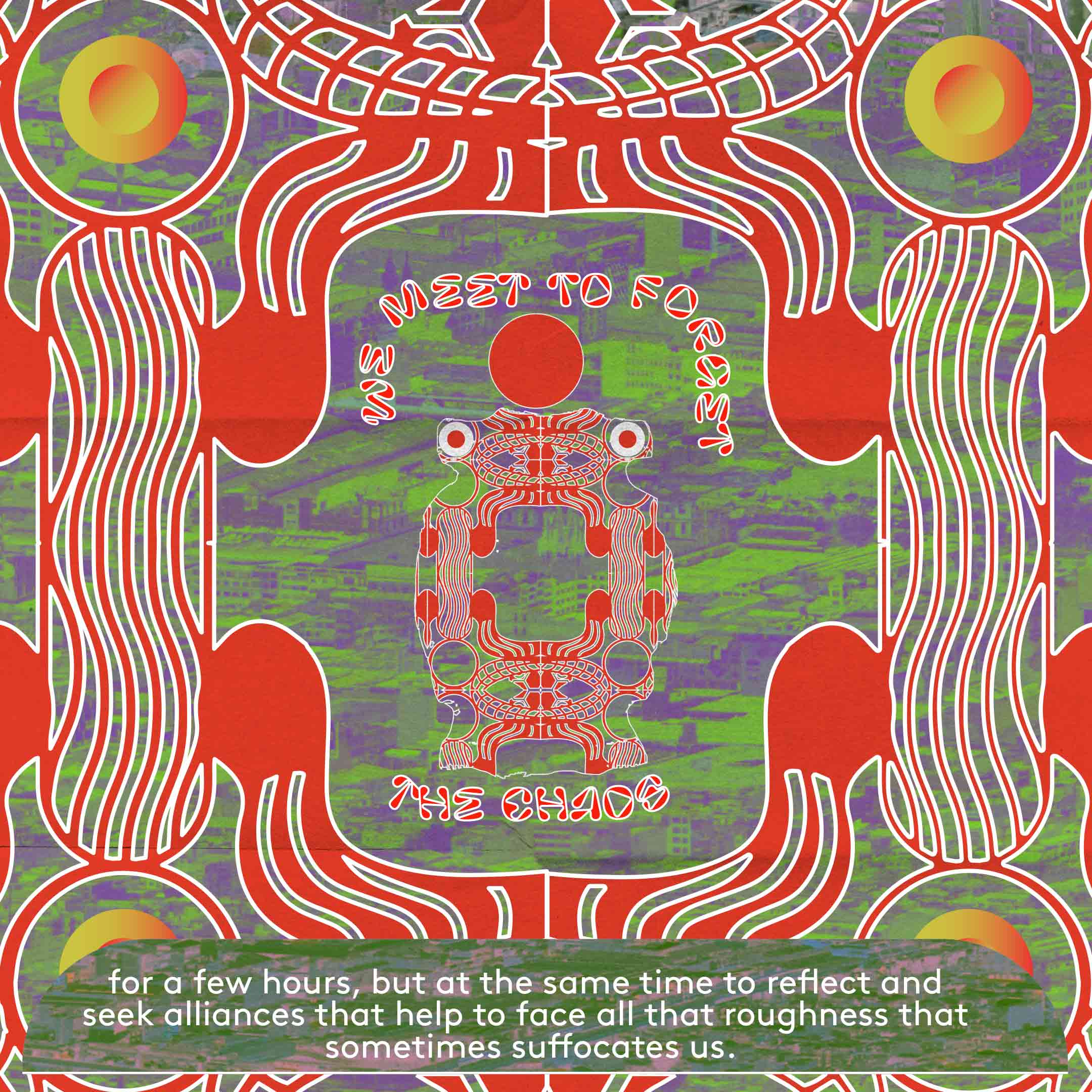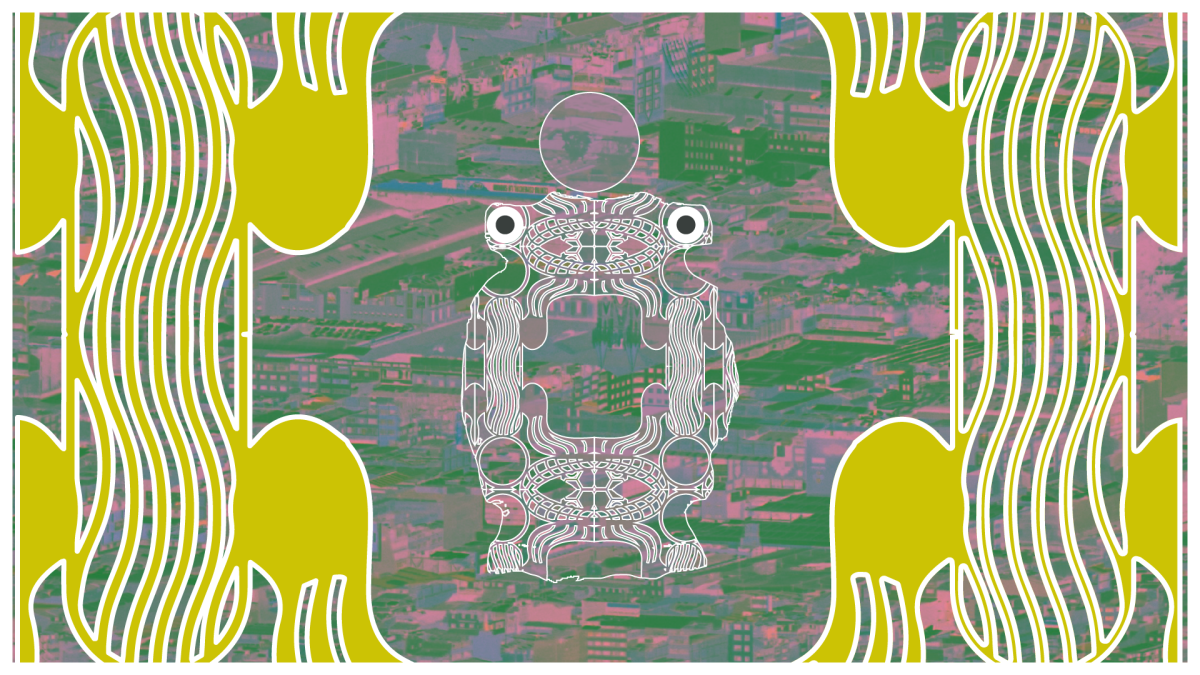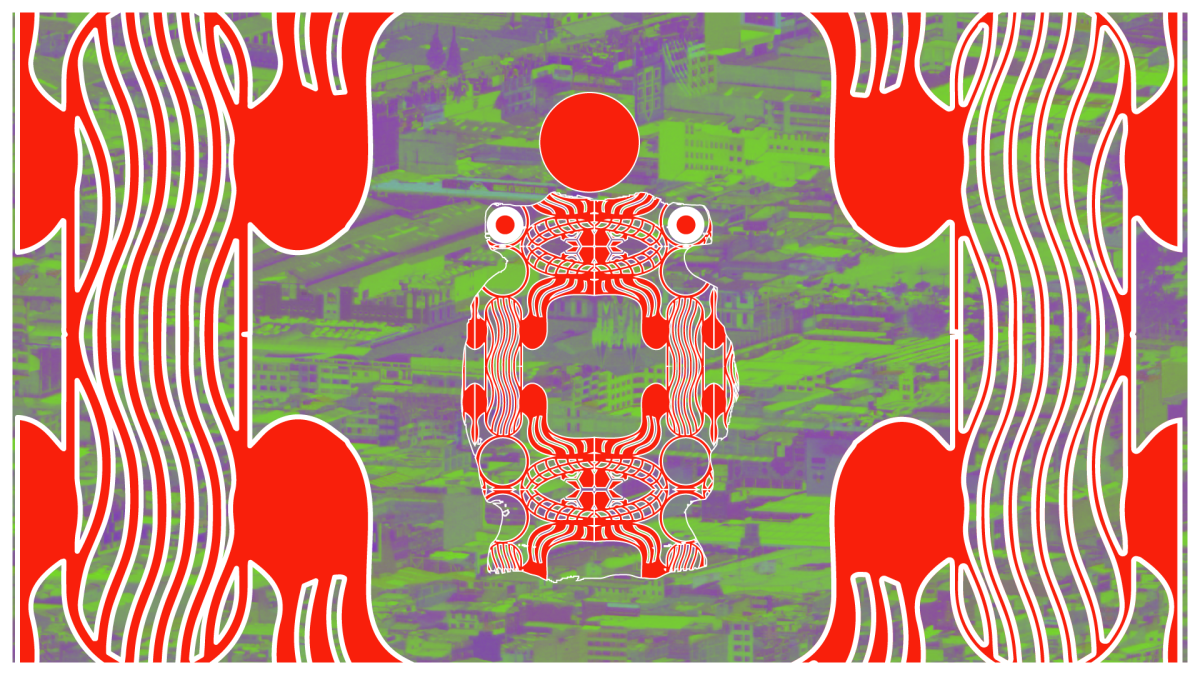
Six Venues to Feel Bogotá’s Mixed Blood
Juan Sebastián Barriga presents a journey through six independent venues in Bogotá, Colombia. Their history of concerts, parties, and events shaped the way music and sounds are displayed in the city. Matik-Matik, Latino Power, El Edificio, Ace of Spades Club, Asilo, and Video Club will introduce us to a side of the city through gatherings and infinite explorations.
encuentre una versión en español de este texto aquí
The capital of Colombia is a mestizo (a mix of several cultures), a restless, vibrant city, and its concert and party halls epitomize the essence of Bogotá. Bogotá is a city that roars. Every corner, every broken sidewalk, every dark alley with the smell of urine vibrates specially. This metropolis has a unique cadence. A rhythm that moves between its chaos and its fury, stirring the blood, the skin, and the hips of those who transit daily amidst the noise, the frenzy, and the enjoyment that springs from every corner of this capital where music is part of its vital essence.
Walking through Bogotá entails constantly encountering a variety of mesmerizing sounds. It’s as if every corner has its own soundtrack. The approximately 11 million people in this capital have combined countless influences from all over the country and the planet. On these sidewalks, they have found a playground to experiment with any sound that crosses their path.
This has created a very active and diverse nightlife scene. Despite the cold that often hits this metropolis built between the mountains and highlands, the heat of dancing ignites every night, forging a series of music scenes recognized worldwide. This very well summarizes the mestizo feeling that has always characterized the capital of Colombia. From tropical to techno, passing through experimentation and the most intense and underground rock one can imagine, Bogotá offers choices and surprises.
The Temple of Bizarre Sounds
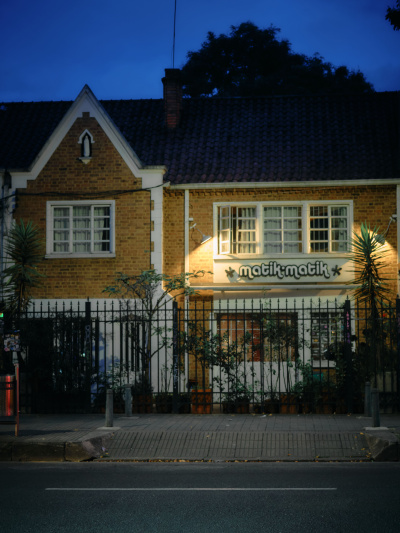
The city is divided into 20 localities, but most concert halls are concentrated in locality number 2. Better known as Chapinero, it is the main sonic meeting point in the capital. While each area has its own music venues, party spots, and frenzy, the central location of this locality, its history, and everything these streets combine have generated a creative breeding ground constantly mutating and presenting musical projects that challenge reason.
For example, near a busy street is a small but intense place called Matik-Matik. Created in 2008 by Julian Calais and Diana Gómez, this colorful and warm space is the epicenter of an eclectic and experimental avant-garde music scene. Matik is a kind of laboratory that, in the words of Ben Calais, the venue’s manager and programmer, is a «place for enthusiasts»; for music lovers whose ears are open to any sound play and out-of-place situation, like a chicken wing-eating contest animated by a strident band whose members play in diapers.
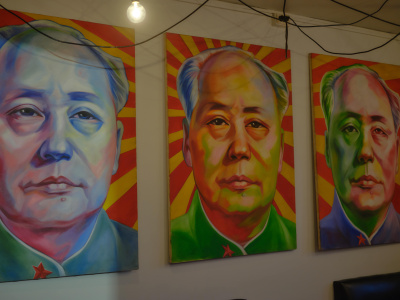
Matik-Matik was created because there were few spaces where experimental musicians could showcase their works. Still, with the arrival of more and more proposals, its curation changed over the years. It also became an incubator of sounds such as fusions between tropical music with rhythms from other latitudes, the most experimental jazz, noise, punk, hip hop, traditional Colombian music, and any proposal that challenges the boundaries of what we understand as music.
Matik is not just a record label, it also hosts film forums, festivals, and workshops. As Ben explains, they operate without a strict plan but with a lot of passion, doing whatever they feel inspired to do with this small musical giant.
Matik-Matik has become a hub for restless minds eager to collaborate and innovate. The energy generated by this space has inspired the creation of other iconic venues in the city, such as Latino Power.
The Lair of the Jaguar
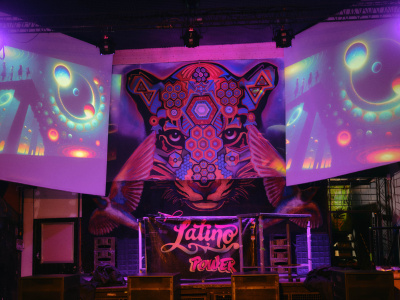
This concert hall currently stands as a musical resistance point in one of the areas of Chapinero most affected by gentrification. Alix Lesmes, the programmer of Latino Power, recounts that the seed of this venue was in another emblematic but now disappeared place in Bogotá, Piso Tres, whose essence was more punk. When it closed, the desire to create a space with more professional infrastructure and sound remained, while maintaining the DIY and collaborative spirit.
Moreover, when Latino Power was born in 2010, it coincided with a very interesting musical effervescence. The tropical and folkloric sounds of the country began to merge with other foreign vibrations, and this was one of the first massive spaces that lent its stages to the dissemination of these projects. Furthermore, the community pulse created by this venue spread throughout the country. Groups from different regions of Colombia, especially the Pacific and Caribbean, have congregated in this concert hall that became a cultural amplifier, where the meeting of knowledge, curiosities, and ideas sparked a creative pulse now felt worldwide.
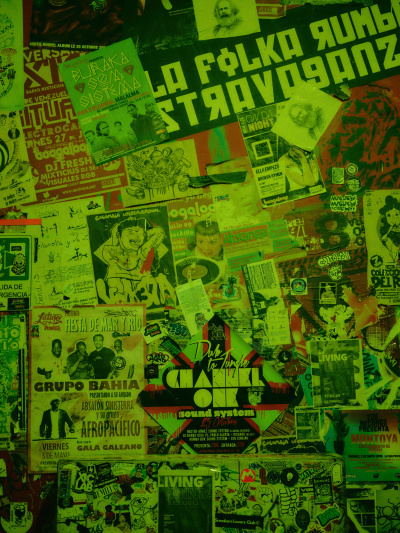
The quality of Latino Power’s sound and its ample space, lined with graffiti and guarded by a gigantic mural of a cosmic jaguar, began to attract foreign artists, and today, this venue vibrates every weekend with the same intensity as its beginnings. During the pandemic, Latino Power did a series of interviews with the different artists that passed through its stage and was one of the first places that opened, even when it was not allowed, giving a little life back to the city. Latino Power has also gone beyond live music and has become a cultural center that hosts forums, assemblies, conversations, and workshops.
Since 2020, the city has housed hundreds of people displaced by the violence experienced in the territories of the Embera indigenous people. Latino Power has approached this community’s youth and opened its microphones to several artists who have been able to record and perform. The space also has a studio made in collaboration with the English organization FairTunes, an organization that works to create music and radio recording studios for popular sectors in Colombia. Its essence is to seek solidarity with the artists, public, staff, and anyone else who wants to enjoy a great night and feel the enormous diversity of sounds and ecosystems that thrive in the city, uniting people around the freedom to be. In a country like Colombia, places like this, in Alix’s opinion, generate «the possibility of expression in the face of armed conflict. It’s an escape from that national pain».
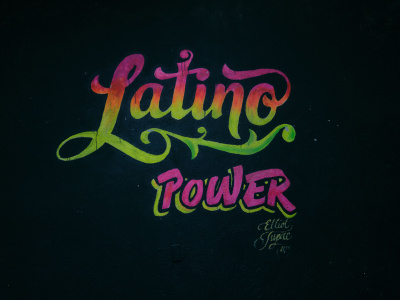
The Noise Building
Undoubtedly, punk is a culture that for years has faced violence and repression. Since the late 1980s, punk music has mixed with Bogotá’s DNA, and today, the city encompasses an extensive and restless scene. In 2020, a concert hall was created in what used to be an abandoned health center, and which has now become a vital point for the development of punk, crust, grind, emo, metal, and other extreme underground sounds.
Dubbed El Edificio (The Building), this venue is located on Carrera Séptima, one of the main roads in northeast Bogotá. From the outside, it still looks like an old abandoned building, but its interior throbs with distortion. Bands from all over Colombia and groups from the rest of Latin America, the United States, and Europe have shouted at the walls surrounding the terrace where concerts are held.

This space was created in 2020 and was a relief because many punk venues closed due to the pandemic. In fact, it was one of the first locations that opened its doors and brought back the extreme audience.
This classic punk space has no stage, prejudices, or discrimination. At every concert, El Edificio calls for unity and respect. The rest of the rooms in this place are usually used for exhibitions, DIY markets, and screen printing. Music labels, cultural collectives, self-managed ventures, and any other countercultural expression have found a space and a creative trench in this old building that continues to push Bogotá’s fertile and extensive punk culture.
The House of Rock
Something similar happened with metal. This culture, also rooted in the city’s entrails since the mid-1980s, has grown exponentially in the last 20 years, making the Colombian metal scene one of the most important on the continent; the metal industry continutes to grow every day. Due to the passion of its audience, Bogotá has become a must-visit place for metalheads worldwide. Engativá, locality number 10, is located in the northwest. A concert hall has been built to showcase national metal’s high quality and professionalism.
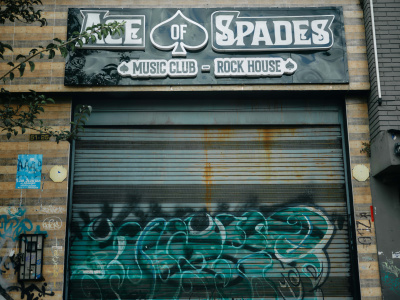
Named after one of the most emblematic rock songs, Ace of Spades Club was born in 2018. Andrés Arce, the club’s talent director, says that the idea arose from the need to have a space to host shows for the bands that his company, Backline Corporation, brings to South America. Despite the size of the Colombian rock scene, there are really few places with the infrastructure, sound, and quality conditions that these shows need.
Over the years, Ace of Spades has grown and is now where you can see legends of international metal with the same quality and strength as local bands. This has made both the audience and the artists take ownership of the place and, as Arce says, «make it their home». This metal house has allowed the development of festivals, the creation of new bands, and the union of collectives, producers, and artists. It has even opened up to other shows, such as dance, art exhibitions, and conferences.
As of now, in 2024, there are plans to move Ace of Spades to a new location to make the live metal experience even more intense.
The Shelter of the Night
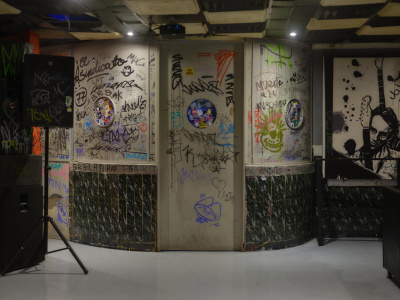
Bogotá, like any metropolis, is connected to creative pulses from around the world, and about ten years ago, a scene inspired by 1980s sounds, dubbed post punk, began to gain strength. This wave, the post punk revival, has immersed a new generation in dark, cold, and gloomy tones. In Colombia, over the years, this scene has been fluctuating. Still, there has been solidification in recent years, and a new generation of projects has been born that have found a place to grow and expand in Asilo.
Created in 2011 on the second floor of an old house in Teusaquillo, locality number 13 of Bogotá, Asilo was born as a meeting point for the bizarre. Goths, punk rockers, lovers of mournful sounds, and some curious ones began to arrive at this space that played very different music from what was playing in the city, like new wave, gothic rock, EBM, and synth wave, among others. Its DIY essence, its philosophy of opening its doors to everyone, not discriminating, and having friendly prices for the public, plus the variety of its parties and crazy fusions like salsa and punk nights, or Italo disco nights only, forged a loyal clientele that continues to dance under the lights of this place.
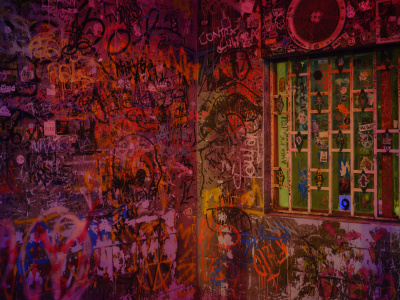
After the pandemic, a younger generation arrived to give Asilo even more life and continue its legacy. Furthermore, Asilo goes beyond dancing; its walls saw the birth of Cinema Punk, a film club that hosts an international festival with screenings in several parts of the city. Of course, live music has been vital for the development of this club. Alongside emerging Colombian post punk bands, some of the genre’s big names today have performed here. The reception was such that it led to the Ansia Festival, whose last editions were so successful that Asilo couldn’t keep up and had to move some of the dates to slightly more prominent venues. But even so, its original essence remains intact. In fact, the love people have for Asilo is so great that hundreds of people donated their money during the quarantine and managed to keep these doors open.
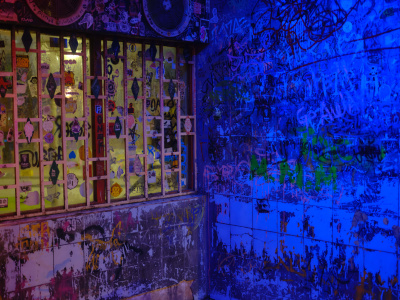
The Electronic Music Palace
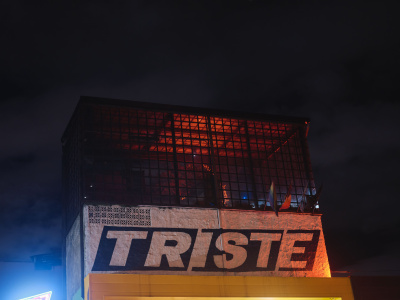
Alongside tropicalia, experimentation, and extreme sounds, Bogotá’s vibration compass is also marked by electronic music, especially techno. All genres associated with electronic music have a space in the city, but techno stands out. One of the temples of this culture is located in the heart of Chapinero, near the emblematic Lourdes church, where Video Club stands on a corner.
Created eight years ago, this venue was built from scratch in a dilapidated building that ended up housing Colombia’s first Funktion-One sound system. This place came to change paradigms in terms of curation at a time of great cultural movement in the city. Video Club was the answer to the prayers of nightlife lovers and a generation of young DJs who discovered a partner to grow and take on the world in this space.
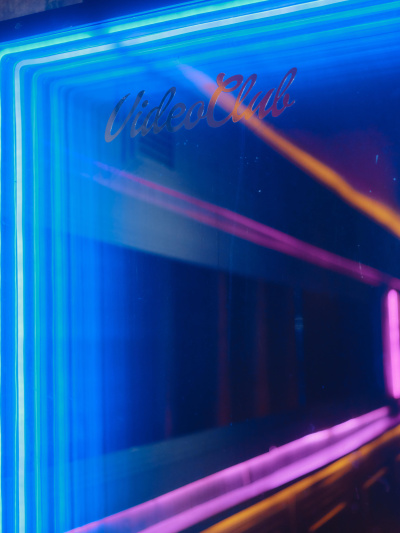
Today, this club is part of the international electronic music circuit. DJs from all over the planet know about the party nights in Bogotá. From the curation, efforts have been made to bring these names without neglecting local talent. Over the years, techno and related sounds have been joined by reggaeton and other similar music, mainly because a new generation has learned to enjoy variety. And that variety has always been a bet of Video Club; the LGBTQIA+ community, countercultural collectives, and people looking to reconfigure the party and our relationship with it have found in these walls a trench to hold forums, assemblies, and gatherings.
Video Club has helped me think of the party beyond frenzy to understand it more as a rebellious and conscious act. Care on the dance floor, responsible consumption, and the fight against discrimination and gender violence are constant every weekend, which has generated the public’s love for this club. The pandemic almost wiped out this space, but it was able to resist and today it also hosts a new generation connected to the Video Club philosophy.
In a city as complex as Bogotá, coming together around live music is truly a political relief for thousands of people. It is to meet to forget the chaos for a few hours, in between sweat and movement, but at the same time to reflect and seek alliances that help us face all the roughness that sometimes suffocates us. Many times, one finds the energy and strength to meet a new day.
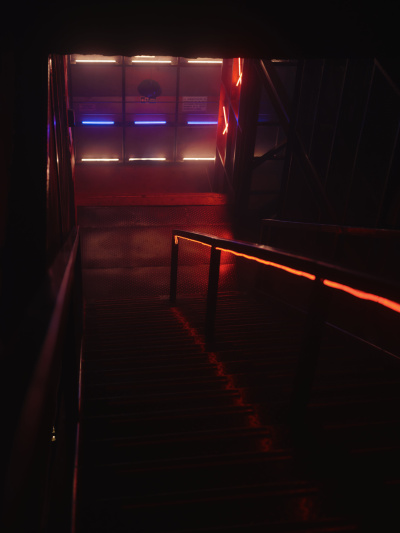
This essay is part of the virtual exhibition «Norient City Sounds: Bogotá», curated and edited by Luisa Uribe.
Biography
Juan Sebastián Barriga is a journalist and researcher whose passion for music and sound has led him to look beyond entertainment and parties to understand culture as a cross-cutting axis that affects all social and political aspects of our lives. Follow him on Instagram.
Published on August 22, 2024
Last updated on August 30, 2024
Topics
Why do people in Karachi yell rather than talk and how does the sound of Dakar or Luanda affect music production?
From Bangladeshi electronica to global «black midi» micro scenes.
From breakdance in Baghdad, the rebel dance pantsula in South Africa to the role of intoxications in club music: Dance can be a form a self-expression or self-loosing.
Place remains important. Either for traditional minorities such as the Chinese Lisu or hyper-connected techno producers.
From linguistic violence in grime, physical violence against artists at the Turkish Gezi protests, and violence propagation in South African gangster rap.
Special
Snap
